WHAT ARE THE SIGNS OF LEAD POISONING?
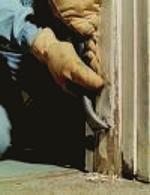 As like many of you, I have definitely exposed my body to lead over the last 30 plus years I have been involved in remodeling. As I learn more about lead poisoning and the symptoms of lead poisoning, I flash back to my younger years working for my dad’s remodeling business. Back then there was little awareness or thought given to the way we worked when disturbing lead paint. One summer I remember complaining of stomach aches, muscle pains and constantly feeling tired even after having the weekend off. My parents took me to the doctor but the doctor couldn’t find any reason for these symptoms. He gave me a terrible tasting medication to take daily and asked me to report back on how I was doing. The symptoms would seem to come and go all summer long, but then went away when I went back to college after the summer was over. This same scenario played over again the following summer.
As like many of you, I have definitely exposed my body to lead over the last 30 plus years I have been involved in remodeling. As I learn more about lead poisoning and the symptoms of lead poisoning, I flash back to my younger years working for my dad’s remodeling business. Back then there was little awareness or thought given to the way we worked when disturbing lead paint. One summer I remember complaining of stomach aches, muscle pains and constantly feeling tired even after having the weekend off. My parents took me to the doctor but the doctor couldn’t find any reason for these symptoms. He gave me a terrible tasting medication to take daily and asked me to report back on how I was doing. The symptoms would seem to come and go all summer long, but then went away when I went back to college after the summer was over. This same scenario played over again the following summer.
Later I found out from my parents that the doctor had told them my symptoms were psychosomatic. He made this decision because the medication he gave me was only a placebo but I was reporting improved health. Looking back what was actually happening was that I was moving in and out of exposure to lead as I was moved from one project to the next. If I gutted a kitchen and remodeled it I would get sick and the symptoms would appear. After completing that project I might move to an addition or attic renovation project where I would have little or no exposure to lead. My symptoms would come and go as I moved from project to project and as my body had time to adjust.
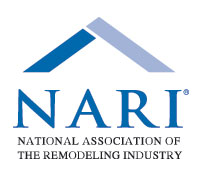 Fortunately for me, in the early days of owning my remodeling business, I learned a lot about lead and lead safe work practices through the NARI/HUD Lead Safe Remodeler training program that came out in the mid 1990’s. The current Certified Renovator training is only one day and really only teaches attendees how to contain the dust and debris. Different than the current class, the NARI/HUD class was two days long and actually thought us lead-safe work practices that eliminated or significantly reduced the creation of lead dust and debris. Attending that class was definitely worth the investment of time and money. Both I and my employees changed the way we thought about the work we did and the methods we used going forward.
Fortunately for me, in the early days of owning my remodeling business, I learned a lot about lead and lead safe work practices through the NARI/HUD Lead Safe Remodeler training program that came out in the mid 1990’s. The current Certified Renovator training is only one day and really only teaches attendees how to contain the dust and debris. Different than the current class, the NARI/HUD class was two days long and actually thought us lead-safe work practices that eliminated or significantly reduced the creation of lead dust and debris. Attending that class was definitely worth the investment of time and money. Both I and my employees changed the way we thought about the work we did and the methods we used going forward.
Lead poisoning is a serious concern, often confused with other illnesses:
(Note: The following information comes from the Massachusetts Division of Occupational Safety, Publication: # 17379-13-200-7/93)
Workers can be exposed to lead by breathing in lead dust or fumes from work activities, by eating, drinking or smoking in work areas, or by handling contaminated objects - and accidentally swallowing lead dust. Workers in many workplaces have so much lead in their bodies that they are slowly being poisoned. The symptoms may hardly be noticeable at first. But over time, lead can damage the brain, blood, nerves, kidneys and reproductive organs. This damage can cause serious disability: memory loss, extreme tiredness, emotional problems, even kidney failure, coma or death.
 Lead poisoning can occur when people are exposed to large or small amounts of lead over time. Lead builds up in the body and may cause temporary or permanent damage. A blood lead test can show whether your body has absorbed a dangerous amount of lead. A high blood lead level is an indication that lead is building up in the body faster than it can be eliminated.
Lead poisoning can occur when people are exposed to large or small amounts of lead over time. Lead builds up in the body and may cause temporary or permanent damage. A blood lead test can show whether your body has absorbed a dangerous amount of lead. A high blood lead level is an indication that lead is building up in the body faster than it can be eliminated.
There are many symptoms or signs that suggest a problem with lead, but they can also be symptoms of other illnesses. It is also possible to have lead poisoning without noticing any symptoms. If you work around lead you should regularly see your doctor, whether or not you are experiencing the following symptoms:
Early Signs and Symptoms of Lead Poisoning:
- Fatigue
- Headache
- Sleeplessness
- Uneasy stomach
- Irritability or nervousness
- Poor appetite
- Metallic taste
- Reproductive problems
 Later Signs and Symptoms:
Later Signs and Symptoms:
- Aches or pains in stomach
- Memory problems
- Muscle and joint pains
- Constipation
- Nausea
- Weight loss
- Weak wrists or ankles
- Kidney problems
Note: The Photo above shows wrist-drop in adult with lead poisoning and renal failure.
What to do if you have been poisoned by lead

 Looking for accurate information about the EPA RRP rule?
Looking for accurate information about the EPA RRP rule? 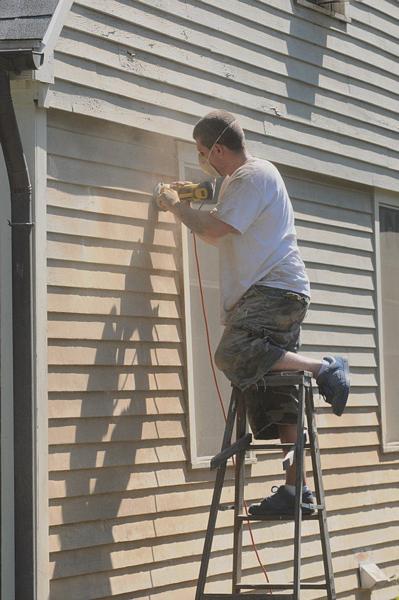
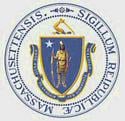 On Friday
On Friday  If RRP instructors follow the EPA created instructor training manual when training renovators, they will be teaching students to do things that violate OSHA rules. (
If RRP instructors follow the EPA created instructor training manual when training renovators, they will be teaching students to do things that violate OSHA rules. ( Current OSHA and RRP related rules and training seems to concentrate on what not to do, without enough time and attention on the right way to do things. With OSHA for example, fall protection rules require a business to put fall protection equipment in place and train workers when and how to use. Great, but why not also complement it with training on methods for working safely and how to avoid putting yourself in a position to fall?
Current OSHA and RRP related rules and training seems to concentrate on what not to do, without enough time and attention on the right way to do things. With OSHA for example, fall protection rules require a business to put fall protection equipment in place and train workers when and how to use. Great, but why not also complement it with training on methods for working safely and how to avoid putting yourself in a position to fall?  For RRP, the required training teaches how to contain dust and debris so it won’t spread outside the contained work area. Might renovators who follow these instructions only be increasing the health risks to workers by containing and concentrating the dust and debris in the confined work area? Wouldn’t it make sense to also train workers on lead-safe work practices that actually limit or prevent the creation of dust to begin with?
For RRP, the required training teaches how to contain dust and debris so it won’t spread outside the contained work area. Might renovators who follow these instructions only be increasing the health risks to workers by containing and concentrating the dust and debris in the confined work area? Wouldn’t it make sense to also train workers on lead-safe work practices that actually limit or prevent the creation of dust to begin with?  Home buyers, investors and realtors will likely drive awareness about lead and the new EPA RRP rule up. But, at the same time, such awareness will drive the values of pre-1978 properties down. If unaware of the additional considerations of risks, liability and costs related to the RRP, realtors will likely walk into a hornet’s nest.
Home buyers, investors and realtors will likely drive awareness about lead and the new EPA RRP rule up. But, at the same time, such awareness will drive the values of pre-1978 properties down. If unaware of the additional considerations of risks, liability and costs related to the RRP, realtors will likely walk into a hornet’s nest.  A buyer’s willingness to purchase a property that contains lead will definitely be effected as a result of the RRP rule. First, once word gets out, the health risks of lead paint and related liabilities will cause many buyers to bypass any consideration of pre-1978 properties. As the supply goes up, the prices of these properties will go down. Also, investors won’t like the added costs of owning such properties, particularly if the value of those properties is less likely to increase over time as compared to properties without lead. This too will lower property values to a point where the value of certain properties may only be in the land they sit on, less the cost to get rid of the original lead infused structure.
A buyer’s willingness to purchase a property that contains lead will definitely be effected as a result of the RRP rule. First, once word gets out, the health risks of lead paint and related liabilities will cause many buyers to bypass any consideration of pre-1978 properties. As the supply goes up, the prices of these properties will go down. Also, investors won’t like the added costs of owning such properties, particularly if the value of those properties is less likely to increase over time as compared to properties without lead. This too will lower property values to a point where the value of certain properties may only be in the land they sit on, less the cost to get rid of the original lead infused structure.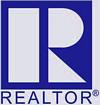 As a side note, realtors as a whole are typically much more professional and proactive than contractors. The majority of them are also dues paying members of one single, well funded and very powerful trade association that represents their interests. I predict that once a good number of realtors catch wind of and understand how the RRP will affect their industry; their association will be working to modify the rule in their favor. This might be of benefit to renovators, but just as easily, it might not.
As a side note, realtors as a whole are typically much more professional and proactive than contractors. The majority of them are also dues paying members of one single, well funded and very powerful trade association that represents their interests. I predict that once a good number of realtors catch wind of and understand how the RRP will affect their industry; their association will be working to modify the rule in their favor. This might be of benefit to renovators, but just as easily, it might not.
 The
The  One way to think about this might be to relate it to eating fish. The government often says that if you fish in certain bodies of polluted water, you can safely eat up to so many of the fish you catch without any health concerns. If the government says you can eat up to 3 fish a year, how safe would you feel eating even one fish? Using this analogy, how safe might the owner feel having renovations done if there is any lead present at all at their property?
One way to think about this might be to relate it to eating fish. The government often says that if you fish in certain bodies of polluted water, you can safely eat up to so many of the fish you catch without any health concerns. If the government says you can eat up to 3 fish a year, how safe would you feel eating even one fish? Using this analogy, how safe might the owner feel having renovations done if there is any lead present at all at their property? In a recent article about their efforts to address challenges for builders and remodelers due to the new EPA RRP rule, the National Association of Home Builders (NAHB) left out some critical information that causes their article to be very misleading to renovators and home owners unfamiliar with specific details about the RRP rule. In my opinion, the article also does a disservice to the manufacturer of
In a recent article about their efforts to address challenges for builders and remodelers due to the new EPA RRP rule, the National Association of Home Builders (NAHB) left out some critical information that causes their article to be very misleading to renovators and home owners unfamiliar with specific details about the RRP rule. In my opinion, the article also does a disservice to the manufacturer of 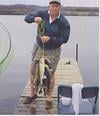 One way to think about this might be to relate it to eating fish. The government often says that if you fish in certain bodies of polluted water, you can safely eat up to so many of the fish you catch without any health concerns. If the government says you can eat up to 3 fish a year, how safe would you feel eating even one fish? Using this analogy, how safe might the home owner feel having renovations done without using lead-safe work practices if there is any lead at all present at their property? The choice should be theirs.
One way to think about this might be to relate it to eating fish. The government often says that if you fish in certain bodies of polluted water, you can safely eat up to so many of the fish you catch without any health concerns. If the government says you can eat up to 3 fish a year, how safe would you feel eating even one fish? Using this analogy, how safe might the home owner feel having renovations done without using lead-safe work practices if there is any lead at all present at their property? The choice should be theirs. The U.S. Environmental Protection Agency recently filed a complaint and proposed a $784,380 penalty against Hanson’s Window and Construction Inc. of Madison Heights, Mich., for violations of the 1998 federal rule for failure to warn residents of potential lead-based paint exposures.
The U.S. Environmental Protection Agency recently filed a complaint and proposed a $784,380 penalty against Hanson’s Window and Construction Inc. of Madison Heights, Mich., for violations of the 1998 federal rule for failure to warn residents of potential lead-based paint exposures.
 Lead-based paint dust created during renovations is the most common source of lead exposure to children in the United States. About 75 percent of the nation’s housing built before 1978 contains lead-based paint. When properly managed, lead-based paint poses little risk. If paint is not maintained, however, even low levels of lead exposure can threaten occupants’ health, especially children and pregnant women
Lead-based paint dust created during renovations is the most common source of lead exposure to children in the United States. About 75 percent of the nation’s housing built before 1978 contains lead-based paint. When properly managed, lead-based paint poses little risk. If paint is not maintained, however, even low levels of lead exposure can threaten occupants’ health, especially children and pregnant women Many remodelers have asked me about resources they can use to find out more about lead, lead poisoning and the EPA RRP rule. When I ask them why they are looking for this information two common reasons seem to rise to the top. First, they are looking to better educate themsleves about lead and lead poisoning so they can be better prepared to discuss the health risks of lead with their clients and prospects. Second, they are looking for resources to share with their prospects and clients, either as part of their marketing efforts or to add to their web sites.
Many remodelers have asked me about resources they can use to find out more about lead, lead poisoning and the EPA RRP rule. When I ask them why they are looking for this information two common reasons seem to rise to the top. First, they are looking to better educate themsleves about lead and lead poisoning so they can be better prepared to discuss the health risks of lead with their clients and prospects. Second, they are looking for resources to share with their prospects and clients, either as part of their marketing efforts or to add to their web sites.
 In the new
In the new  In a June 3, 2010
In a June 3, 2010 
 Statistics have shown, including EPA's own research, that more children are poisoned by lead due to renovations as a result of their parents doing the work than by professional remodelers.
Statistics have shown, including EPA's own research, that more children are poisoned by lead due to renovations as a result of their parents doing the work than by professional remodelers. 


